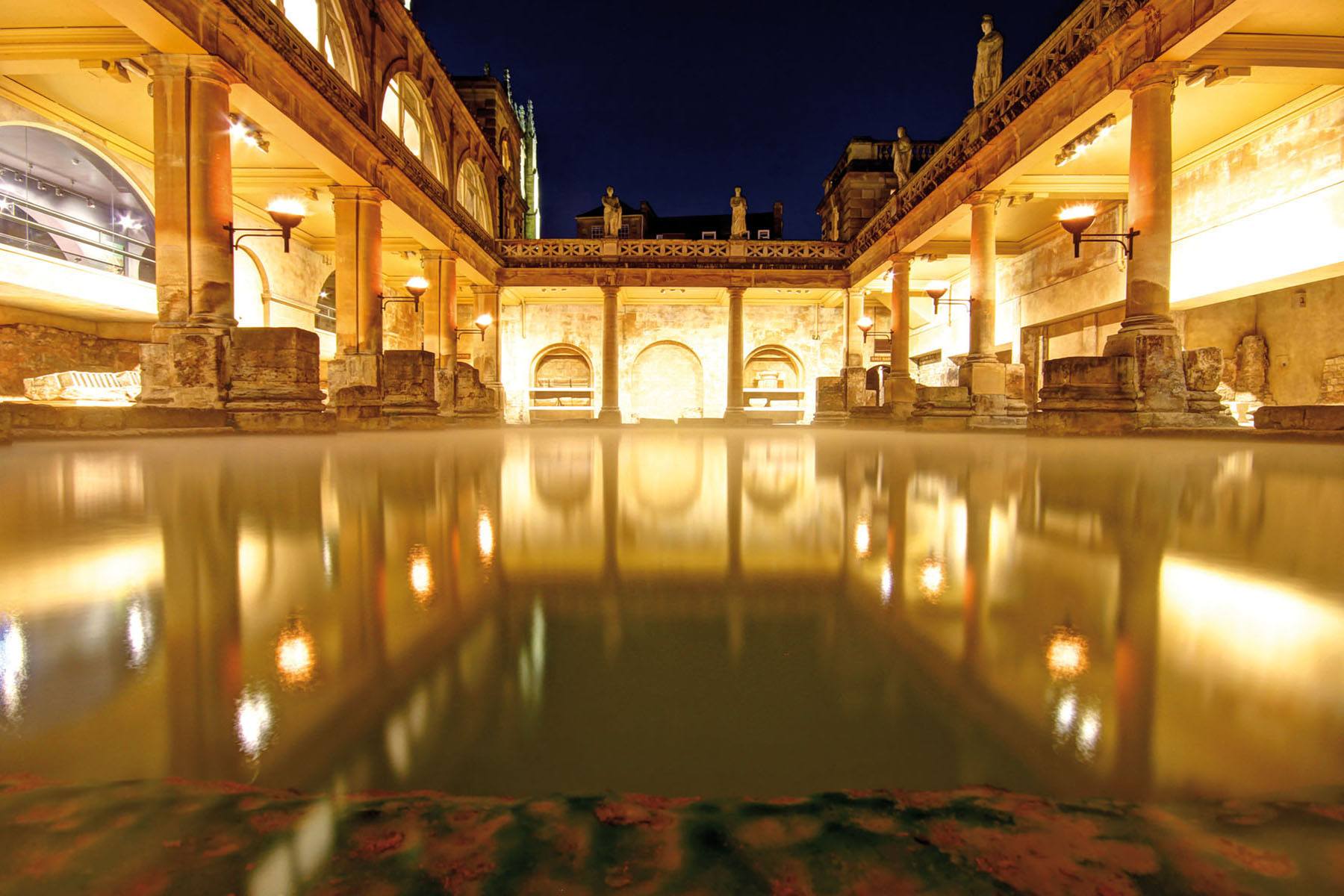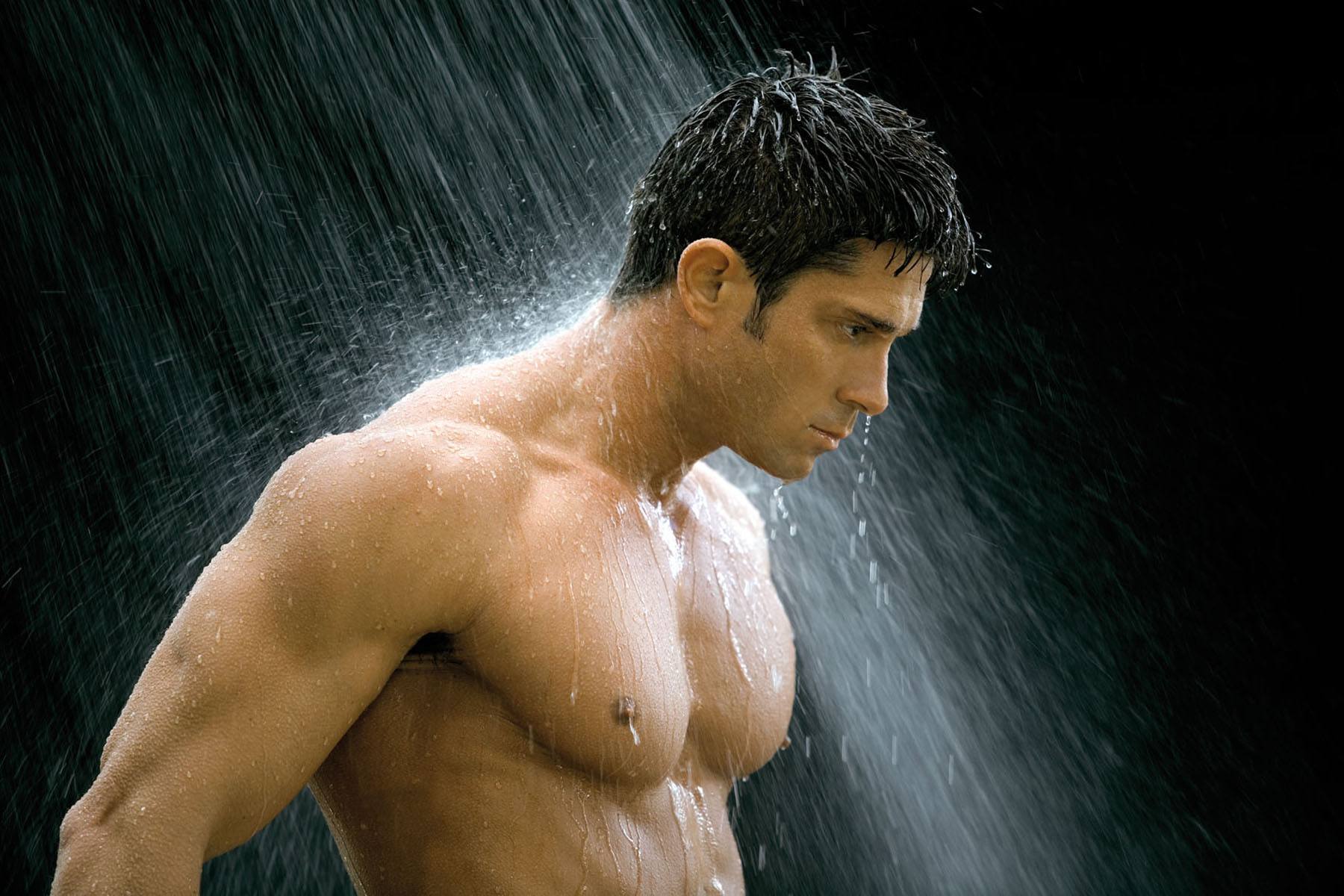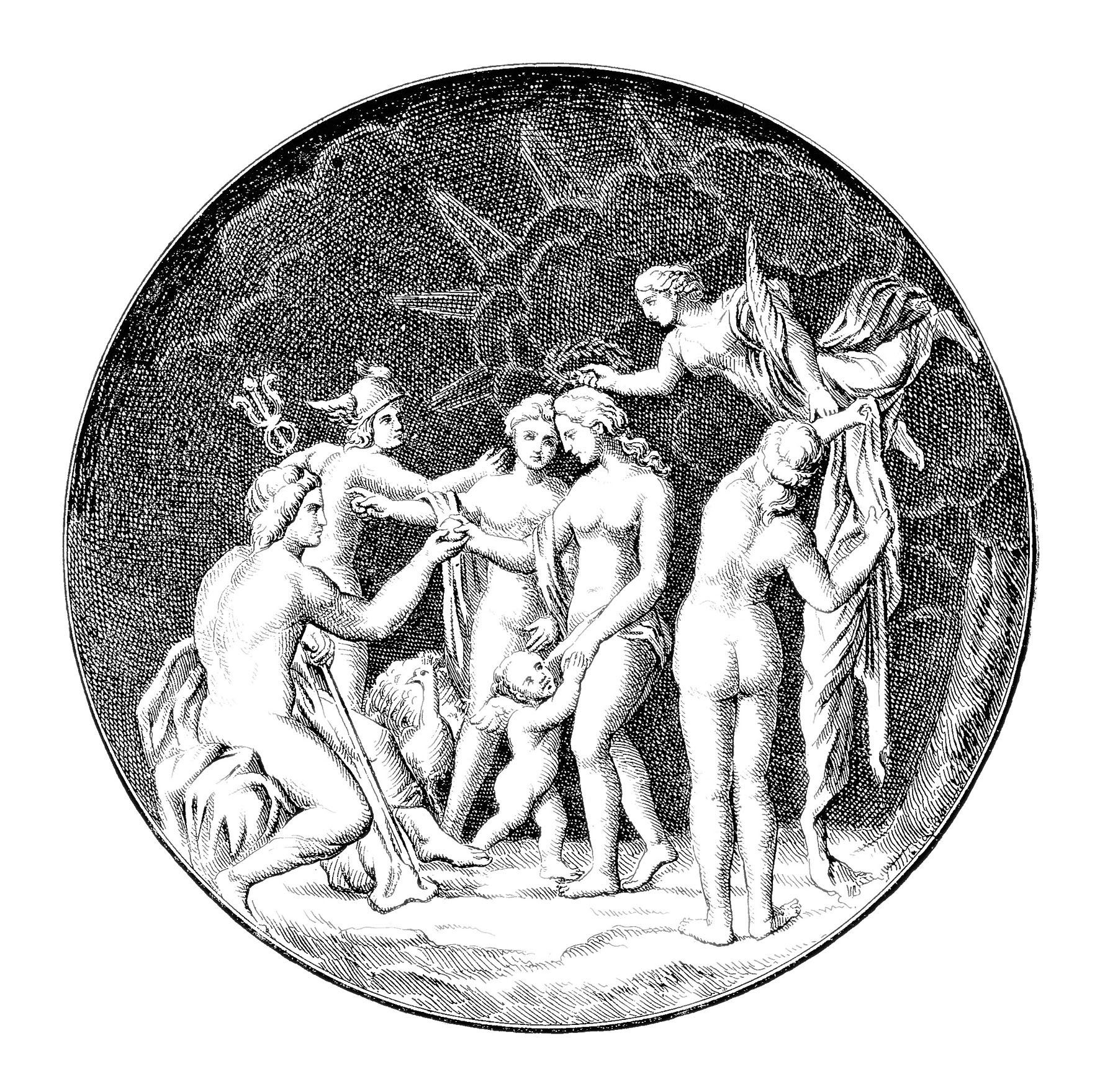The bath houses of ancient Rome, bursting at the seams with visitors, ushered in a decisive cultural development: Water was no longer just useful, but was also a source of pleasure. This type of public bathing culture, which also went hand in hand with overflowing sensuality, came to an abrupt end with the fall of the Roman empire and the rise of a new code of morals. Based on the Roman bath houses, the Muslims built their own bathing facilities – with the difference being that the splendid hammams were places of leisure and silent rejuvenation. The act of physical cleansing, accompanied by music and meditation, simultaneously celebrated physical seclusion and spiritual contemplation. One stayed here for hours – in some cases, days. Even today, hammams are still an important part of the societal structure of Islamic countries, and Europe has now also discovered these exotic bathing oases for itself.
Formation of the spas
The rapidly increasing flow of visitors to springs said to have healing powers advanced the creation of the first spas in Europe. However, guests could not expect a great number of amenities. Apart from the springs, only spartan accommodations and, in many cases, mediocre food were available. This, however, did not detract visitors. A large number hoped for miracle cures, but reality did have its good sides as well: Numerous springs eased skin diseases and people saw the therapeutic effects on both the body and the soul as something akin to a miracle.
“Water is H2O: Two parts hydrogen, one part oxygen. But there is also a third thing that makes it water. And nobody knows what that may be.” D.H.Lawrence
The age of Reformation replaced alchemy and magic with medicine and ushered in a profound change in values: hygiene for health. Doctors recommended drinking enormous quantities of high mineral content water, which was supposed to cure every single disease. Due to the fact that certain springs were said to hold a higher potential for healing than others, the client structure also underwent a change. The aristocracy and wealthy individuals represented a patient segment that wanted to maintain its luxurious lifestyle while staying at the spa. People demanded exquisite lodgings and elegant facilities – and the cornerstone for the creation of the grandiose spas was laid. The old Roman bath houses were revitalized and Europe caught spa fever. People bathed together, experienced invigoration and rejuvenation, revitalized the soul and strengthened the mind. Last but not least, the baths served as a place to take time off from the Victorian moral code, which was ever-present in daily life. As a result, people enjoyed unchecked eroticism and unburdened freedom in the circle of like-minded spa visitors. Beethoven and Goethe preferred the Karlsbad spa, Napoleon idled in Vichy and Turgenev relaxed at Baden-Baden.
New water trend – new myths
Due to the world wars of the 20th century, the bath houses lost their importance. It was not until the fitness boom of the 1980s that water returned to the public focus in the field where society has always had a major demand and will probably always have one: physical and mental health. Therefore, new myths have also entered into the world of water. Borne by the hope that we could wrest the last secrets from the omnipresent water. One of these new myths – which has not yet been confirmed, but has also not been disproved – is “vitalized water.” This term originates from the observations of the Tyrolean forester and independent natural scientist Viktor Schauberger, who, in the 1920s, came to the conclusion that unknown powers are at work in nature. These release energy in concentric whirls. Based on this observation, he developed the hyperbolic “Schauberger funnel” to improve the quality of drinking water. Instead of storing it in straight pipes, it would be returned to its original spiral curve state, thus energizing and improving the quality of the water. Another similar example is “Grander water,” which is produced using a water vitalization process that represents a healthy medium for useful micro-organisms. Although it has not been scientifically proven, the company’s now global clientele absolutely believes in the effectiveness of Grander water. The Japanese author Masaru Emoto has also entered the fray of the new water myths. His topic of choice is crystal photography, in which he attempts to find a connection between the shape of the crystals and the quality and condition of water. Emoto claims that water can be “animated” and improved by emotion – for example by treating it with music.
“When the well is dry, we understand the value of water.” Benjamin Franklin
One can choose to believe in these myths surrounding water and its properties or not. Nevertheless, animating water is a lovely idea. Especially because there is at least some truth to it. Animating water can also be understood as breathing new life into man. And this feat is one that water has accomplished time and time again over the course of history. Today we call it wellness. More than ever before, the balance between the mind and the body has gained importance in our rapidly moving age. And once again, water, as the universal element, is at the center. As an effective aid for beauty and health. As a comforting way to slow things down. As a way to reduce life to the things that matter – be it a contemplative soak in the tub at home, which helps the mind recover from the overwhelming amount of stimuli we are exposed to every day. A short trip with friends to a health resort where one not only takes care of oneself during the bathing ritual, but also cultivates social contacts. Or just a simple glass of fresh water, which has always revitalized us and lets us remember that not only is every drop precious, but also a part of ourselves.
Looking at a drop of water, you are essentially looking at yourself. A human being is made up of roughly two thirds water. No human, no individual organism on this world could have ever developed without water. This knowledge has existed for a long time, even before we were able to put it down in writing. Water was already venerated in antiquity as the source of all existence.
The German philosopher Hegel dubbed it the element of the selfless opposite: “Water’s existence is being-for-others… its determination is to be the thing that is not yet special and it has therefore been called ‘the mother of all special things’ from an early age onwards.” Across civilizations, most of which assumed that life had started in the oceans, an abundance of creation myths have been developed. In their different versions, they all depicted water as the mirror of the universe and subsequently found their continuation in the world religions. The first book of Moses, for example, states: “In the beginning God created the heavens and the earth. Now the earth was formless and empty, darkness was over the surface of the deep, and the Spirit of God was hovering over the waters.”
In the Japanese creation myth, a gigantic carp awakens from its slumber and thrashes around so violently that it creates a tidal wave, causing the Japanese islands to surface on the face of the earth. The Indian god Vishnu, on the other hand, shapes the earth while resting on a snake gliding through the cosmic waters.
Ancient water myths
Starting in antiquity, several water gods were venerated. Some were benign, others evil. They were all, however, omnipotent. Like Okeanos, for example, the origin of all gods and simultaneously the river flowing around the world, or Poseidon, the god of the ocean. The most alluring of the classic goddesses relating to water is Aphrodite or Venus, her Roman counterpart. According to the myth, she was born of the semen of sea foam and blood and rose out of a scallop on Cyprus. She was so beautiful that the seasons of the year came and were bedazzled by the sight of her. As the goddess of love and beauty the “foam-born” inspired numerous artists. This led to the creation of some of the greatest masterpieces in art history, such as the Greek antique statue “Venus of Milo,” Botticelli’s painting “Birth of Venus” or Titian’s work of art “Venus of Urbino.”
People also believed in water nymphs who reigned over streams, springs and grottoes, in sea nymphs who saved mariners and shipwrecked sailors, but also in sea monsters and mermaids – seductive and irresistible creatures – who robbed men of their senses with their demonic attraction and at times cost them their lives. They embodied both the life-threatening and life-giving aspect of water. However, the veneration of water found its expression not only in mythology, but also in cultural rituals.
In order to produce rain, people carried out mystic ceremonies, in the course of which rain dances were performed to exhaustion. Sacrifices were made or processions held with songs of invocation. One washed away “evil” with holy water and subjected the spirit to a spiritual cleansing, also mirrored by the washing of the dead in all cultures. And last but not least, the ritual of baptism symbolizes a bond with God for believers.

Copyright Michael Brus
Entering “Esbjerg” in the heart of Vienna for the first time, you are welcomed by mild fragrances, sparkling blades, classic pots, jars and a sea of brushes. The most beautiful store in the city is all about the body – its well-being, its beauty. The shaving specialty shop on Krugerstrasse – a side street of Kärntner Strasse – offers Austria’s largest selection of fine wet shaving products and has long since become the city’s premiere address for grooming. This is where men who are concerned about proper grooming and body care come for all their shaving needs. Tastefully and invitingly arranged, the products are a true delight as they reveal their magnificent effect in the privacy of a gentleman’s own bathroom.
Marga Walcher sells nothing but the best: “I love the stylish and the beautiful and spare no effort to be the top of my class and to stay that way too.” You can tell that the lady makes no concessions where quality is concerned. A diverse set of regular customers is her reward. They all have one basic need in common: Nothing but quality can touch their skin.
The further range of scents and care products for men is made up of proven and classic labels, all of which have been personally selected by Walcher. Furthermore, one can shop at Esbjerg with a clear conscience, as fairness at all production stages is of the utmost importance. Because it actively takes responsibility in the field of employee leadership, Esbjerg was ranked third in the “DiversCity” awards of the Vienna Economic Chamber in 2012.
Our own brand of natural cosmetics now complements the Esbjerg range
Before a brand is awarded space in these elegant surroundings, Ms. Walcher puts manufacturers through a close inspection, traveling around the world if need be. “The product must be on solid footing and have the right team behind it.” Success has proven her right. Over the past 30 years, the store has become a real insider’s tip. It gets off to an international start in the morning, as businessmen from all corners of the world make their appearance along with established Viennese regulars. “Some men have been our customers for years. We have heard about their personal lives and their ups and downs.”
To shop at Esbjerg is to reward yourself and spare no expense. Understandably so: So much goodness, such bliss for a weary man’s heart, plus all the expert advice to make your skin feel its best, and none of the tedious shelf-hopping, wasting valuable time before you can find the product that suits you. Back when Esbjerg opened its doors three decades ago, male customers were more liable to opt for the next best solution, pocket their purchase and just carry on. In other words, there was no pleasure in shopping for them.
Nowadays, they appreciate competent advice, they take great care to pick the right product and then stick with it. They have come to indulge in their very own haven of well-being, because this is what a decent wet shave using quality shaving cream and a shaving brush is all about, essentially. It’s an almost meditative ritual exclusive to men.



